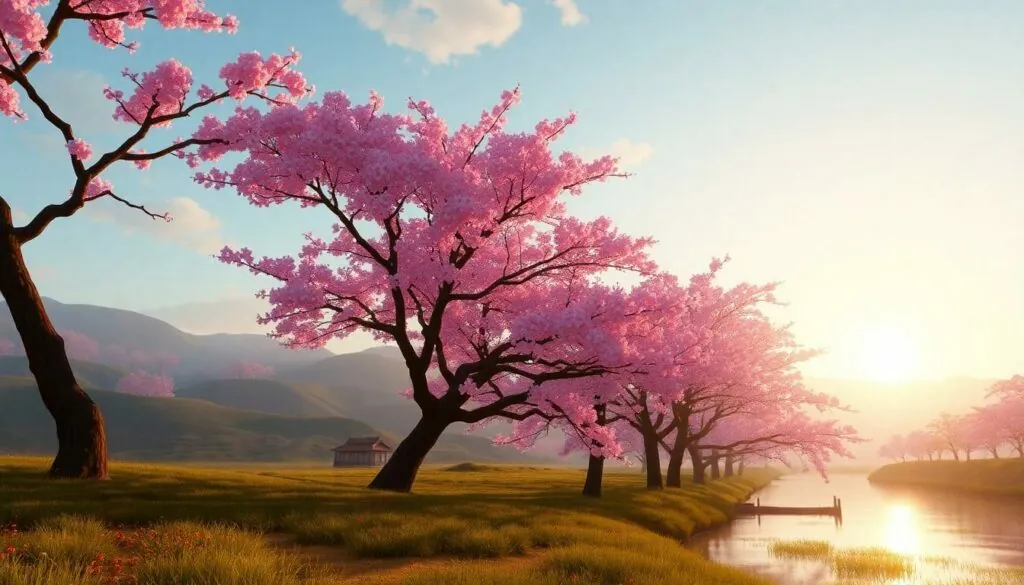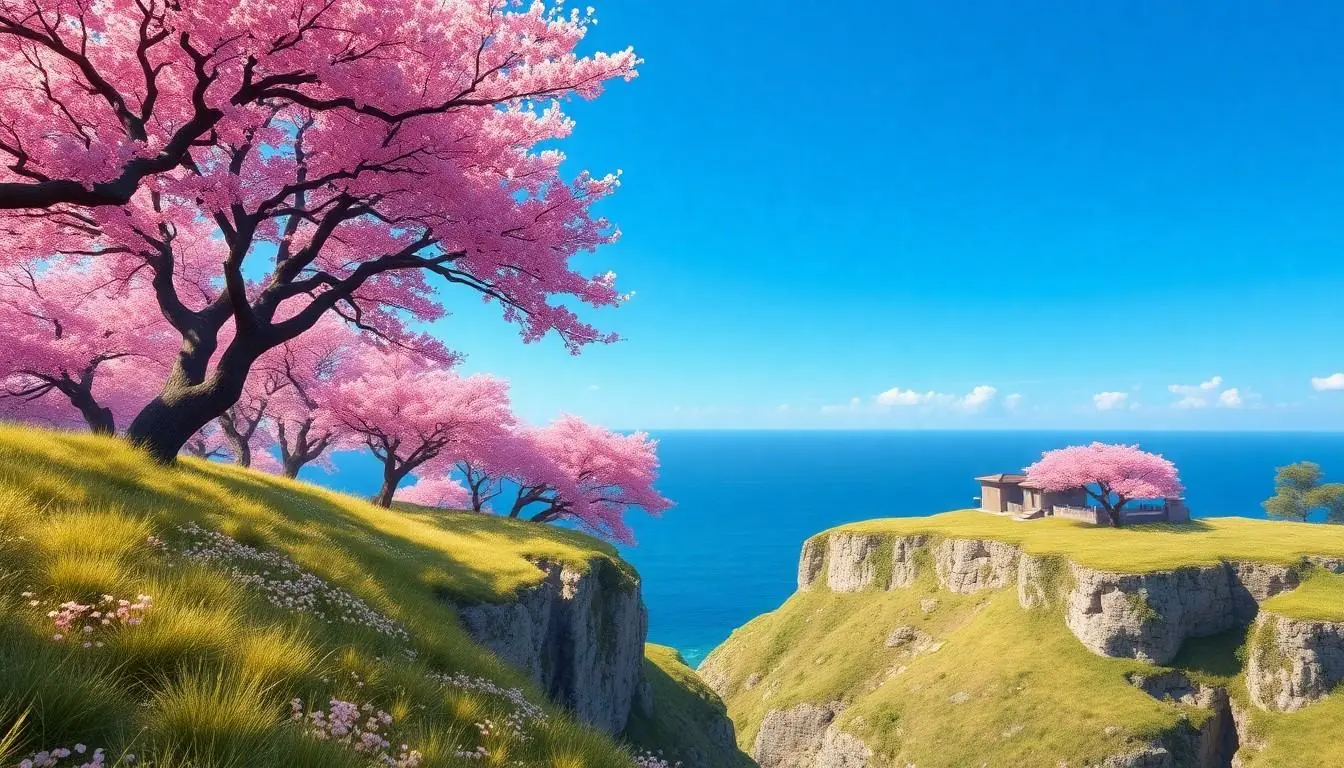In the breathtaking world of Ghost of Tsushima, players don’t just battle Mongol invaders; they also find peace in the art of haiku. Imagine wandering through stunning landscapes, where each tranquil spot invites you to capture a moment of Zen. These haiku locations are more than just pretty backdrops—they’re gateways to reflection and creativity.
But let’s be real: who doesn’t want to flex their poetic prowess while dodging arrows? With the right guidance, players can uncover these hidden gems and craft verses that would make even Bashō proud. So grab your katana and your inner poet, and let’s explore the serene haiku locations that make Ghost of Tsushima not just a game, but a journey into the soul of samurai artistry.
Table of Contents
ToggleOverview of Haiku Locations
Haiku locations in Ghost of Tsushima enhance the player’s experience through serene landscapes and poetic reflection. These spots provide a blend of gameplay and creativity while exploring the island.
Significance of Haikus in Ghost of Tsushima
Haikus enrich the narrative, allowing players to connect with nature and introspect amidst the turmoil of war. Each haiku embodies themes of beauty and transience, highlighting the bond between the samurai and their environment. Additionally, composing haikus deepens the emotional weight of the protagonist’s journey. Engaging with these poetic moments encourages players to pause and appreciate the artistry woven into the game’s design.
Gameplay Mechanics of Discovering Haikus
Players must locate specific locations marked by scenic beauty to access haiku sites. Tuning into the wind guides players towards these hidden gems. Once discovered, players can select words that reflect their feelings and experiences, shaping the haiku’s essence. Engaging with this gameplay mechanic adds a unique layer of interaction, merging exploration with personal expression. Players often find that these moments of creativity provide a much-needed respite from the chaos of combat.
Scenic Locations for Haikus
Ghost of Tsushima features breathtaking landscapes that inspire players to engage creatively through haikus. Scenic locations offer an escape from combat, allowing for moments of reflection.
The Serenity of Tsushima’s Landscapes
Tsushima’s landscapes encompass rolling hills, tranquil beaches, and vibrant cherry blossom trees. Each area showcases natural beauty that prompts introspection. Verdant fields and serene coastlines evoke a sense of peace, contrasting the chaos of battle. Players often find these serene spots amidst the challenges faced, creating a harmonious balance between action and calm. Stunning vistas not only enhance the gameplay experience but also foster a deeper connection with nature.
Notable Locations to Find Haikus
Notable haiku locations include the serene forest in the Izuhara region where players can immerse themselves in lush greenery. The cliffs of the Adachi Grasslands provide a breathtaking view of the surrounding ocean. Each area offers a unique setting, such as the picturesque valley near Kushi Temple, known for its cherry blossom trees. Coastal shores also serve as beautiful backdrops for haikus, with gentle waves adding to the atmosphere. These specific places invite players to explore, discover, and appreciate the poetic side of Tsushima.
Tips for Finding All Haiku Locations
Finding haiku locations in Ghost of Tsushima enhances the gaming experience. It encourages players to explore the breathtaking landscapes while engaging in poetic expression.
Exploration Strategies
Engaging in exploration remains vital for locating haikus. Players should wander off the beaten path, searching for scenic spots guided by the gentle wind. Investigating areas near rivers and cliffs often yields hidden haiku sites. Listening for the sound of rustling leaves or flowing water can also lead to inspiration. Focusing on regions with distinct natural features promotes discovery. Artists find beauty in unexpected locations, so paying attention to detailed visuals enhances creativity.
Utilizing the Map Effectively
Maps serve as essential tools for tracking haiku locations. Players can mark areas of interest while navigating each region within Tsushima. Keeping an eye on environmental indicators, like wind direction, guides them toward potential spots. Checking the map frequently offers a broader understanding of the terrain and its nuances. Using the map’s landmarks reveals closer proximity to haikus hidden among the landscapes. Planning routes strategically increases the chances of uncovering these artistic locations.
Thematic Elements of Haikus
Haikus in Ghost of Tsushima embody the connection between nature and emotion, offering players a means of self-expression. Each poem captures fleeting moments in the game’s vibrant landscapes, reflecting emotions and experiences.
Nature and Emotion in Haiku Poetry
Nature serves as a powerful backdrop for haikus, highlighting the beauty of Tsushima’s landscapes. Rolling hills, cherry blossoms, and serene beaches evoke deep feelings in players. Poetic expression flourishes alongside elements like gentle winds and rustling leaves, allowing players to convey their sentiments. Each selected word resonates with an emotional tone, connecting players to the natural world. Joy, sorrow, and tranquility manifest through the combination of visuals and word choices in haikus, enhancing the overall gaming experience.
How Haikus Enhance the Storytelling
Haikus add depth to the narrative, intertwining poetic moments with the protagonist’s journey. Each poem encapsulates a fragment of the character’s inner thoughts amidst the chaos of conflict. Players find these literary moments essential for understanding the emotional stakes of the story. Key themes of beauty and impermanence surface within haikus, reflecting the fragile nature of life during war. By integrating poetry, the game promotes reflection and connection, enriching the immersive storytelling. Players engage with the world on a deeper level, experiencing not just action but also introspection through their haiku discoveries.
Conclusion
Exploring the haiku locations in Ghost of Tsushima offers players a unique blend of combat and creativity. These serene spots allow for moments of reflection that enhance the overall gaming experience. By engaging with nature through poetry, players can deepen their connection to the game’s narrative and its protagonist’s journey.
The stunning landscapes of Tsushima serve as a backdrop for this artistic expression, inviting players to appreciate beauty amidst chaos. Each haiku captures fleeting moments that resonate emotionally, enriching the player’s adventure. By seeking out these locations, players not only uncover hidden gems but also embrace the tranquility that haikus bring to their journey.


